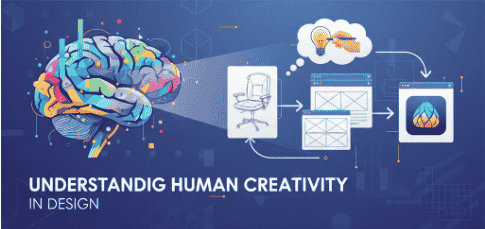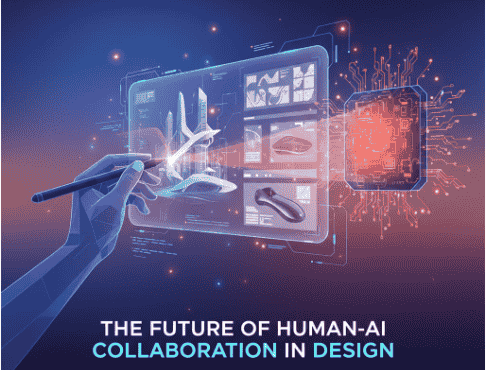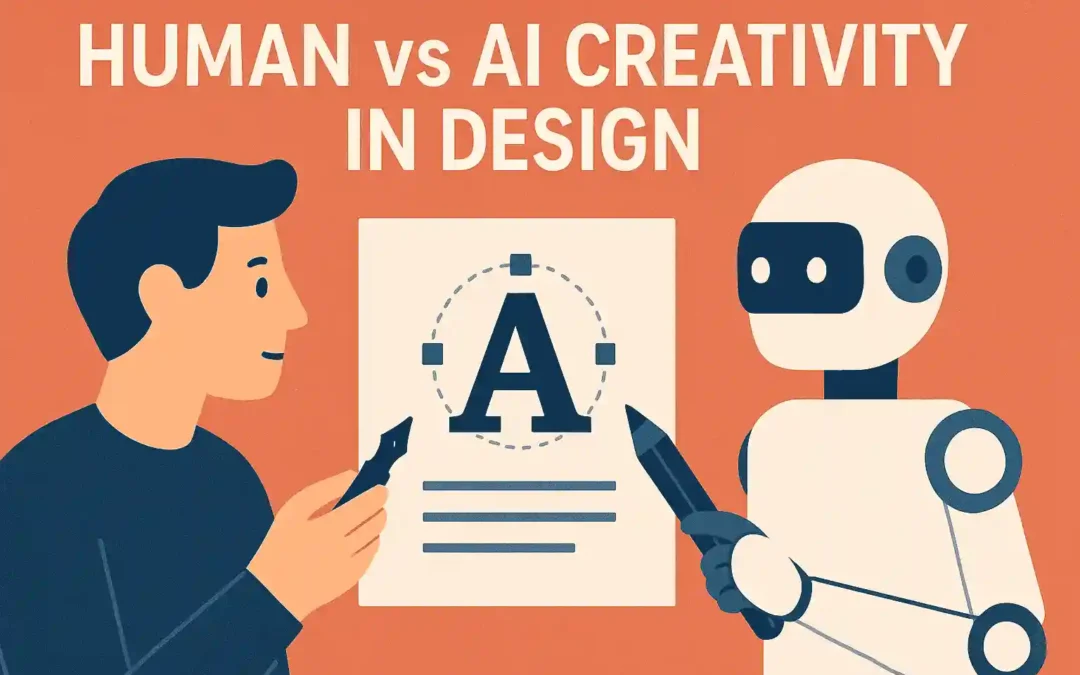Table of Contents
- Introduction
- Understanding Human Creativity in Design
- The Rise of AI in the Creative Industry
- Human vs AI Creativity Design: Key Comparisons
- Originality & Imagination
- Speed & Efficiency
- Emotional Connection
- Consistency & Scalability
- Opportunities: How AI Supports Designers
- Challenges: The Risks of Over-Relying on AI
- The Future of Human-AI Collaboration in Design
- Fonts & Typography in the Age of AI
- Conclusion
- References
1. Introduction
The debate over Human vs AI creativity design has become one of the most pressing discussions in the creative industry. As artificial intelligence tools like MidJourney, DALL·E, and Adobe Firefly enter the mainstream, designers are asking: Can AI truly be creative? Or is human imagination irreplaceable?
This article explores the strengths and weaknesses of both, showing how AI is reshaping the design world and what this means for human designers.
2. Understanding Human Creativity in Design
Human creativity is deeply tied to imagination, cultural understanding, and emotion . Designers don’t just create visuals; they tell stories and express identities. A designer might craft a logo that captures a brand’s personality or choose a font that resonates with an audience’s feelings.
For example, our handcrafted font collections like George Sean Font Duo or Marysville Signature Font are not just about style — they represent human artistic expression and intent.

3. The Rise of AI in the Creative Industry
AI tools are increasingly capable of generating logos, illustrations, layouts, and even typography . According to a report by Forbes, AI accelerates the design process by automating repetitive tasks and generating quick variations.
This allows businesses and individuals to access design solutions faster and at lower costs.
4. Human vs AI Creativity Design: Key Comparisons
a. Originality & Imagination
- Human: Draws from life experiences, emotions, and cultural nuances.
- AI: Works based on existing datasets, making it more derivative than innovative.
b. Speed & Efficiency
- Human: Requires time for research, brainstorming, and revisions.
- AI: Can produce hundreds of variations in seconds.
c. Emotional Connection
- Human: Infusing emotion and storytelling into design.
- AI: Lacks empathy — its “creativity” is statistical, not emotional.
d. Consistency & Scalability
- Human: May produce unique outcomes but struggles with perfect consistency.
- AI: Excels in producing consistent, scalable design elements.
5. Opportunities: How AI Supports Designers
Instead of replacing humans, AI can act as a collaborator . Designers can use AI to speed up ideation, generate inspiration, or automate repetitive tasks.
For typography, AI tools can suggest pairings — but the emotional depth of fonts like Casaba Melon Serif Font or Oakhurst Script Font comes from human artistic direction.
6. Challenges: The Risks of Over-Relying on AI
- Homogenization of design (similar outputs due to shared datasets).
- Copyright issues around AI-generated content.
- Job displacement fears in creative industries.
The World Economic Forum highlights concerns about AI ethics and originality in the creative economy.
7. The Future of Human-AI Collaboration in Design
The future likely won’t be AI vs humans , but AI with humans . Designers who adapt and learn to integrate AI into their workflow will stay ahead.
Fonts, logos, and branding will still rely heavily on human-driven storytelling , while AI will provide technical support.

8. Fonts & Typography in the Age of AI
Typography remains a powerful example of where human creativity still leads . While AI can generate font-like shapes, authentic typefaces designed by humans carry soul and cultural context .
Check out these handcrafted fonts for your projects:
- Brainiac Calligraphy Font– perfect for creative storytelling.
- Bagel Split handwritten Font– adds a personal, human touch to branding.
9. Conclusion
The Human vs AI creativity design debate is not about competition but collaboration. While AI offers speed, scalability, and efficiency, human creativity brings originality, emotion, and storytelling.
The most successful designers in 2025 and beyond will be those who embrace AI as a partner without losing the human touch that makes design meaningful.
10. References
- Forbes. How Artificial Intelligence Is Transforming Graphic Design.
- World Economic Forum. How Artificial Intelligence Is Changing Creative Industries.
- Letterend Studio. AI: Friend or Foe? Exploring the Role of Artificial Intelligence in the Graphic Design World.

